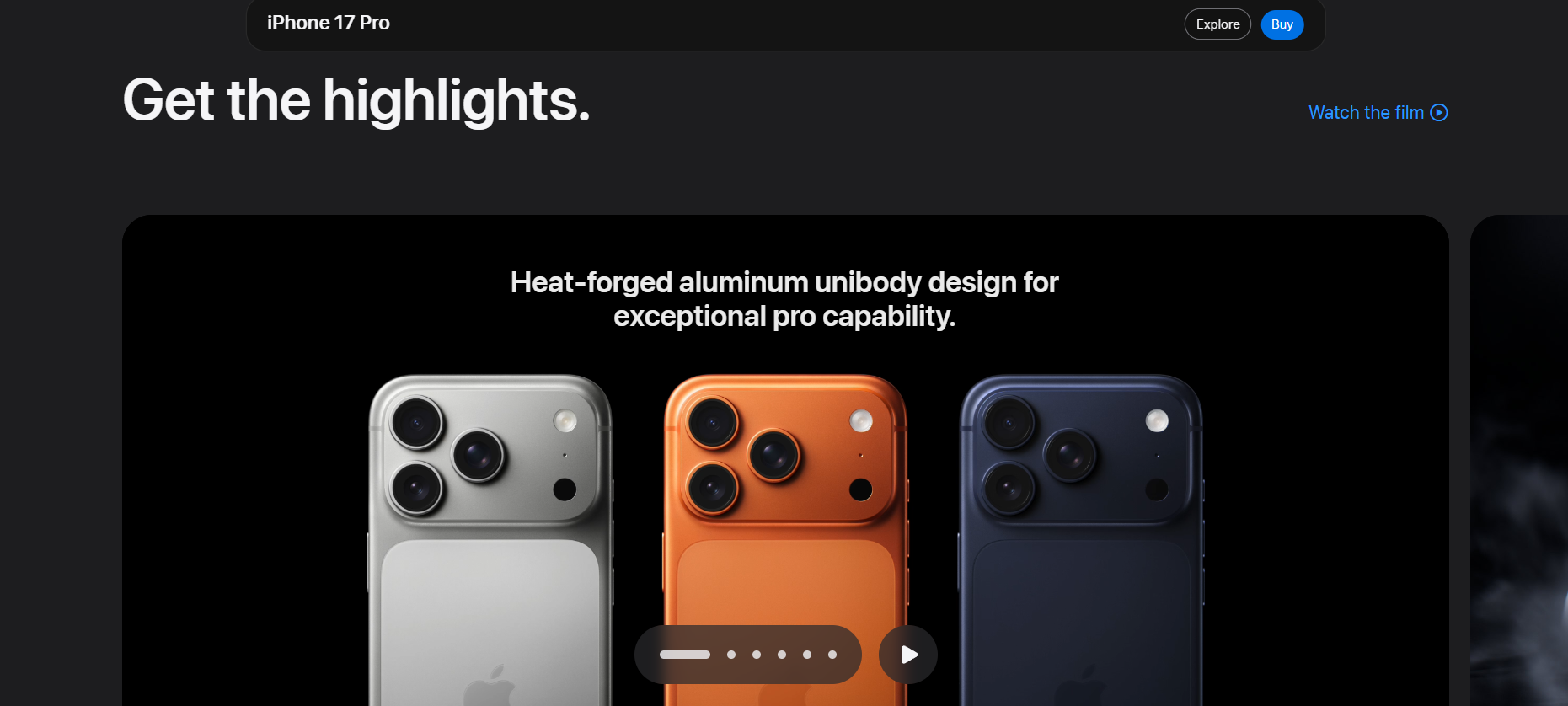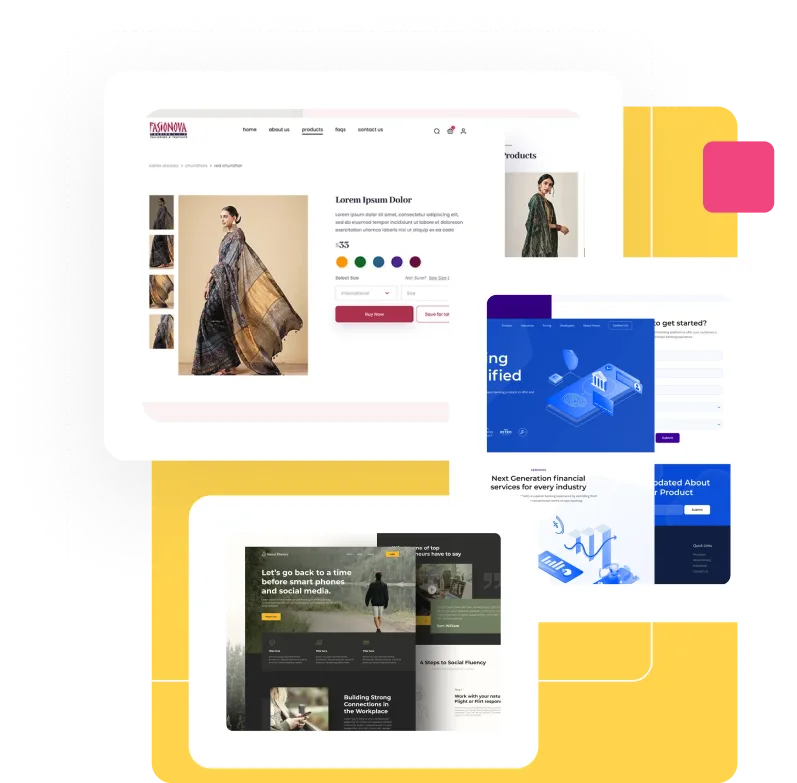

Ecommerce Website Design: Tips, Examples & Best Platforms
Before you can start selling your site online, you’ll need a great website. Discover how and where you can create the best ecommerce website design!

.svg)
Creating a great website takes time and effort. And ecommerce website design comes with even more specifics and curveballs! Learn how to design an ecommerce website from start to finish with our comprehensive guide.
TL;DR
A great ecommerce website creates a positive customer experience and boosts conversion rates. There are plenty of online platforms to build your site, without any graphic design skills. However, an unlimited website design service like ManyPixels provides a cost-effective alternative for getting a professional ecommerce website hassle-free, at just $599!
{{WEB_BANNER="/dev/components"}}
Some offline businesses may need convincing that a professional website is a must. But, things are pretty simple for online businesses.
So, let’s go step-by-step and teach you how to design an ecommerce website!
How to design an ecommerce website?
What makes a great ecommerce graphic design? Here are the main elements and aspects you need to consider with examples of the best ecommerce websites to learn from!
High-quality product pages
Sometimes a business website can be pretty simple: home page, about us (optional) and contact information is enough.
But when you have an ecommerce business, expect the web design to be much more complex.
First of all you’ll need a comprehensive navigation menu with different product categories easily accessible for your website visitors.
You can also create a separate product page for each product. This way you can include high-quality product images, as well as any other specifications that might be relevant to buyers.
You’d expect Apple to have awesome product pages and it’s true. For example, the designated page for the latest iPhone 17 Pro has an awesome slider that lists the phone’s most important features. The whole page is sleek and exciting.

Search and filter options
Being able to search for and find products easily is necessary for a good user experience.
Here’s a website I’ve visited and browsed through on many occasions (wedding season this year had me turning into the protagonist of 27 Dresses).
What I love about this search filter option is the little illustrations. I have no idea what the difference is between a scoop and a boat neckline, so it really helps to be able to see it. The same goes for dress shapes and length.

A smooth checkout process
The point of an ecommerce website is getting people to complete the checkout process. So, creating a smooth user experience in this respect is vital. Here are some things you can do to avoid cart abandonment.
- Don’t require account creation. Put yourself in your target audience’s shoes. All of us are slightly nervous when it comes to online shopping, so it’s understandable we want to complete purchases as soon as possible. Creating an account is usually considered a hassle, and it’s one of the main reasons why people abandon carts.
- Offer different payment methods. Depending on the type of product and shipping options, a variety of payment methods can really help increase conversions. All major credit cards are a given, but consider also modern payment solutions such as PayPal, Stripe, Venmo, Klarna, etc.
- Show transparent cart summary and pricing. There’s nothing that frustrates users as much as hidden costs. Whether it’s shipping or platform processing fees, make sure everything is clear and transparent from the get-go.
- Reassure security and trust. At the end of the day, people won’t shop from websites they don’t trust. Display trust badges, security certifications, and offer guarantees to reassure customers about the safety of their information
Customer reviews
Speaking of building trust with potential customers, there’s nothing more important for e-commerce websites.
You can embed customer reviews from social media or third-party platforms, such as TrustPilot or Yelp on your home page. However, creating a designated page for your customer testimonials is also a solid choice.
We’re all used to seeing customer reviews on SaaS websites. But here’s another great example from a physical product. Keeps is a line of hair loss treatment products. So, they have a terrific customer testimonial page, complete with before and after videos created by real customers!
Sure, these website videos aren’t the best quality, but they are genuine. And trust is by far the most vital ingredient of the best ecommerce website design.

Customer service
You don’t necessarily need a designated customer service web page. But, some form of customer service option is a must for ecommerce websites.
You can create a user-friendly form on your contact page. Or consider using a live chat option to make your customer service as fast and efficient as possible. The efforts won’t go unnoticed - research suggests that 93% of customers will repeat a purchase from brands with excellent customer service.
Responsive design
Did you know that 74% of retail site traffic comes from mobile devices?
So, while responsive design is a critical consideration of good website design in general, it’s even more important for creating online stores.
This can be pretty tricky if you decide to go the DIY route and design your own website. However, if you opt for one of the many ecommerce website design platforms we’re about to list, this is usually done for you.
Straightforward CTA buttons
Some websites merely provide information. Ecommerce websites are always meant to get users to take action.
How do you do that? With a well-crafted CTA button, of course!
It’s a rule of thumb to use bright colors for this particular design element, but you should still be mindful of the context.
For example, see how GiftRocket rocks (pun intended) a nice beige color that matches the overall page design. They’ve added some color to the main graphic, so this muted tone works much better to create a gentle, non-menacing call-to-action.
The text of the button is also great. It’s simple enough, yet it urges you to find out more about the service.

Where to build ecommerce websites?
Now that you know how to design an ecommerce website, let’s discuss a few of the best ecommerce website builders.
Shopify
Shopify has been around since 2006 and has an impressive 2 million merchants. It’s scores high on user-friendliness, and has all the necessary plugins, features and functionalities to help you create a great online store.
Web design possibilities are a bit limited for those looking for free website templates (Shopify only offers 12 free themes).
It’s a hosted solution, meaning you pay a monthly subscription to use their service. The most affordable pricing plan costs $32 per month.
Woo
Woo (previously WooCommerce) is the leading ecommerce building platform, with close to 40% of the market share.
If you're familiar with WordPress, Woo is a robust plugin that can turn your WordPress site into an ecommerce store. It's flexible, customizable, and offers various extensions.
It’s an open-source ecommerce platform, meaning you can create a store there for free. However, you’ll need to purchase features such as hosting and domain fees, security features, shipping options, etc.
BigCommerce
This platform is known for its scalability and built-in features. It's suitable for businesses of all sizes and offers hosting as part of its service.
If you’re looking for information and tips on running an online store, their blog is a treasure chest of knowledge for relevant design trends and handy tips.
BigCommerce pricing starts at just $39, which includes all the basic functionality for an ecommerce site. So, it’s a pretty good option for small businesses.
Adobe Ecommerce
You probably know Adobe as the leader in graphic and web design software. Surprise! They also have an ecommerce solution.
Formerly Magento, Adobe Ecommerce is an ideal solution for larger businesses due to its scalability and extensive customization options. It's more complex and might require technical expertise.
When it comes to pricing, you’ll have to contact them to get an exact quote. Bear in mind that this solution offers as little or as much as you want. For example, you can work with an existing theme that costs around $30, or pay for their search engine optimization (SEO) and marketing, or web design and development services, which cost several thousand dollars.
Squarespace
If you want to build ecommerce websites, as well as a strong Instagram presence, check out this guide on how to connect your Instagram to Squarespace.
Squarespace scores very high on design, thanks to a number of beautiful templates. It's beginner-friendly and includes hosting in its packages.
Wix
Wix allows you to create landing pages, blogs, logos, and yes - ecommerce websites too.
Wix is another drag-and-drop platform that’s perfect for beginners. On the other hand, great design is what Wix is known for. So whether you opt to use an existing site template, or fully customize it yourself, this platform will allow you to get really creative!
Since it’s not created specifically for ecommerce purposes, it lacks some of the functionalities other sites on this list offer. For example, you might need to utilize add-ons, while platforms like SHopify have a built-in framework that’s easier to work with.
You can also read our detailed comparison of Shopify vs Wix here.
Volusion
Volusion is an intuitive eCommerce platform catering to businesses of varying sizes. It provides tools for inventory management, payment processing, SEO, and marketing.
With flexible pricing tiers, it suits small to medium-sized enterprises aiming to establish a scalable online presence. However, for larger enterprises needing highly customized solutions, other platforms might better accommodate their complex needs.
Get a custom ecommerce website with ManyPixels!
We hope this answers your questions about creating online stores and designing an effective and beautiful ecommerce website.
Whatever platform you opt for to launch your website, don’t forget that ecommerce graphic design is never that simple. Although templates are quick and easy, they are no match for a custom website built exactly for your brand needs and business goals.
With ManyPixels’ unlimited website design service you can get unlimited design requests and revisions for as little as $599 a month!
I have been using them for over a year for all of my e-commerce brands. Really happy with the quality of the designs and the overall turnaround time. - Recovy
So, you can get a whole ecommerce website layout, design and any additional assets that will make it better (e.g. illustrations, banners, and more).
Book a free 1:1 demo session and tell us about your needs!
Having lived and studied in London and Berlin, I'm back in native Serbia, working remotely and writing short stories and plays in my free time. With previous experience in the nonprofit sector, I'm currently writing about the universal language of good graphic design. I make mix CDs and my playlists are almost exclusively 1960s.
A design solution you will love
Fast & Reliable
Fixed Monthly Rate
Flexible & Scalable
Pro Designers





.avif)


